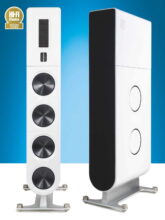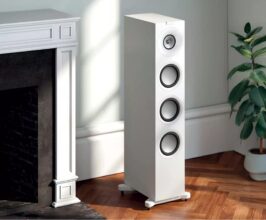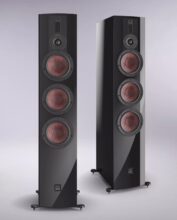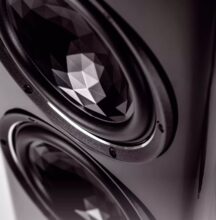KEF Q7 Meta Review
The pleasantly affordable, brand-new Q Series in the KEF portfolio includes the typical DNA of the acoustic experts from Kent and now also benefits from the “Meta” technology.
by Tom Frantzen
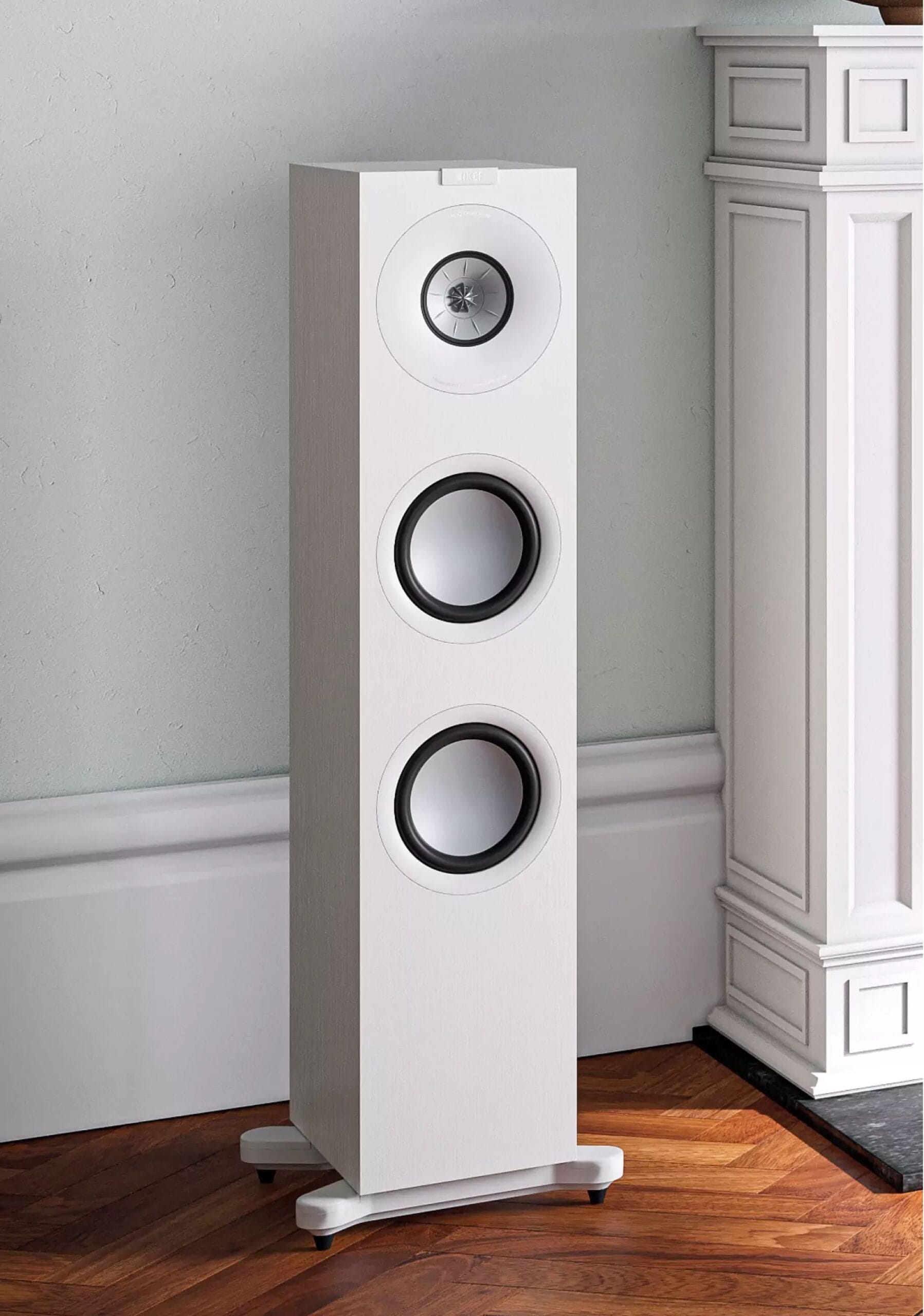
The small to medium series from KEF—which primarily means those affordable for “normal” people—have always been particularly popular. The editorial team fondly remembers the XQ40, which, even many years ago, offered top value for hard-earned money and already presented an extremely harmonious sonic interplay with affordable Marantz electronics.
What hasn’t changed up to the present attractively designed KEF Q7 Meta is the fundamental heart of these speakers: the unique and unmistakable Uni-Q coaxial driver, the characteristic hallmark of practically every KEF loudspeaker. Of course, this exceptional chassis, which makes up the brand core, has been continually developed and optimized. In the current portfolio, you will find the twelfth generation of the Uni-Q, in which a midrange or mid-bass driver effectively “encircles” the centrally mounted tweeter concentrically, i.e., takes it into its center. While the speaker drivers of most other designs are (must be) positioned above and next to each other, at KEF, they are “nested within each other.”
A Heroic Saga with Strengths
This brings immense advantages. The drivers forming the coax work both spatially and temporally congruently, that is, in perfect alignment. In a coaxial chassis, there is only a single sound source, bringing the whole thing as close as possible to the theoretical ideal of a point sound source.
This provides superb group delays and thus timing like from a textbook when thoughtfully and optimally designed. The same applies to the precision of the imaging, which does not suffer from the offset of the division-of-labor drivers among each other. This applies at least to the musically so eminently important, indeed decisive mid-high frequency range, which is transmitted largely seamlessly “from a single point.” And that’s how it sounds, and this also applies to the new Q7. Effortless, as if cast from one mold. The Uni-Q technology is so good, one would have to invent it if Kent Engineering & Foundry hadn’t done so decades ago.
The Uni-Q project was and is anything but simple, something that some competitors might envy KEF for. Because there are some things to consider. The driver has a considerable installation depth to also accommodate the tweeter with its own drive. The mechanical constructions must be built correspondingly nested and yet be able to swing freely without mutual influence.
TEST EQUIPMENT
CD Player: T+A MP 2500 R
Integrated Amplifier: Symphonic Line RG14 Edition, Cambridge Audio EXA100
Speakers: Sonoro Grand Orchestra, Triangle Borea BR10
Cables: AudioQuest, HMS, In-Akustik, Silent Wire, Supra
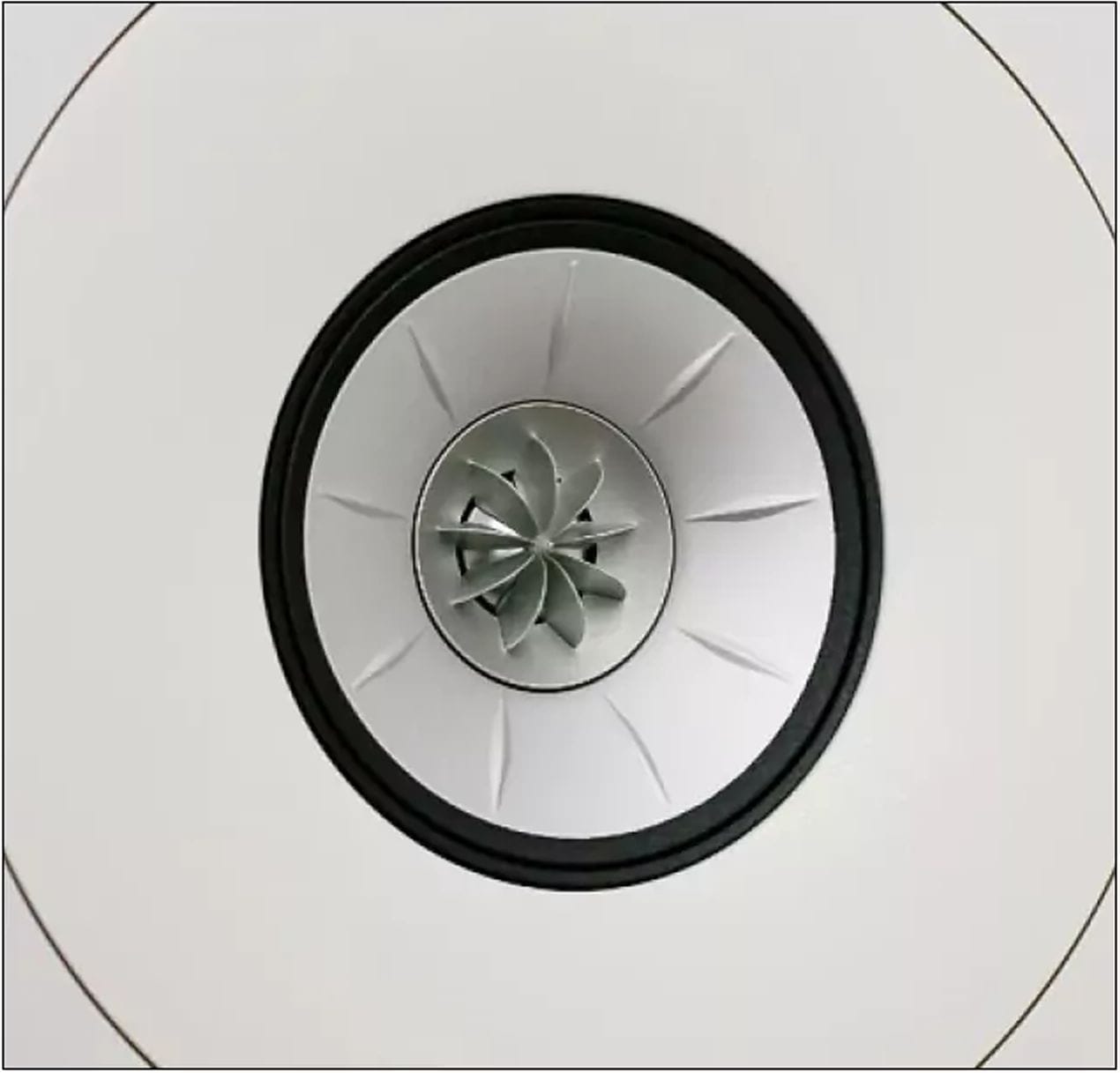
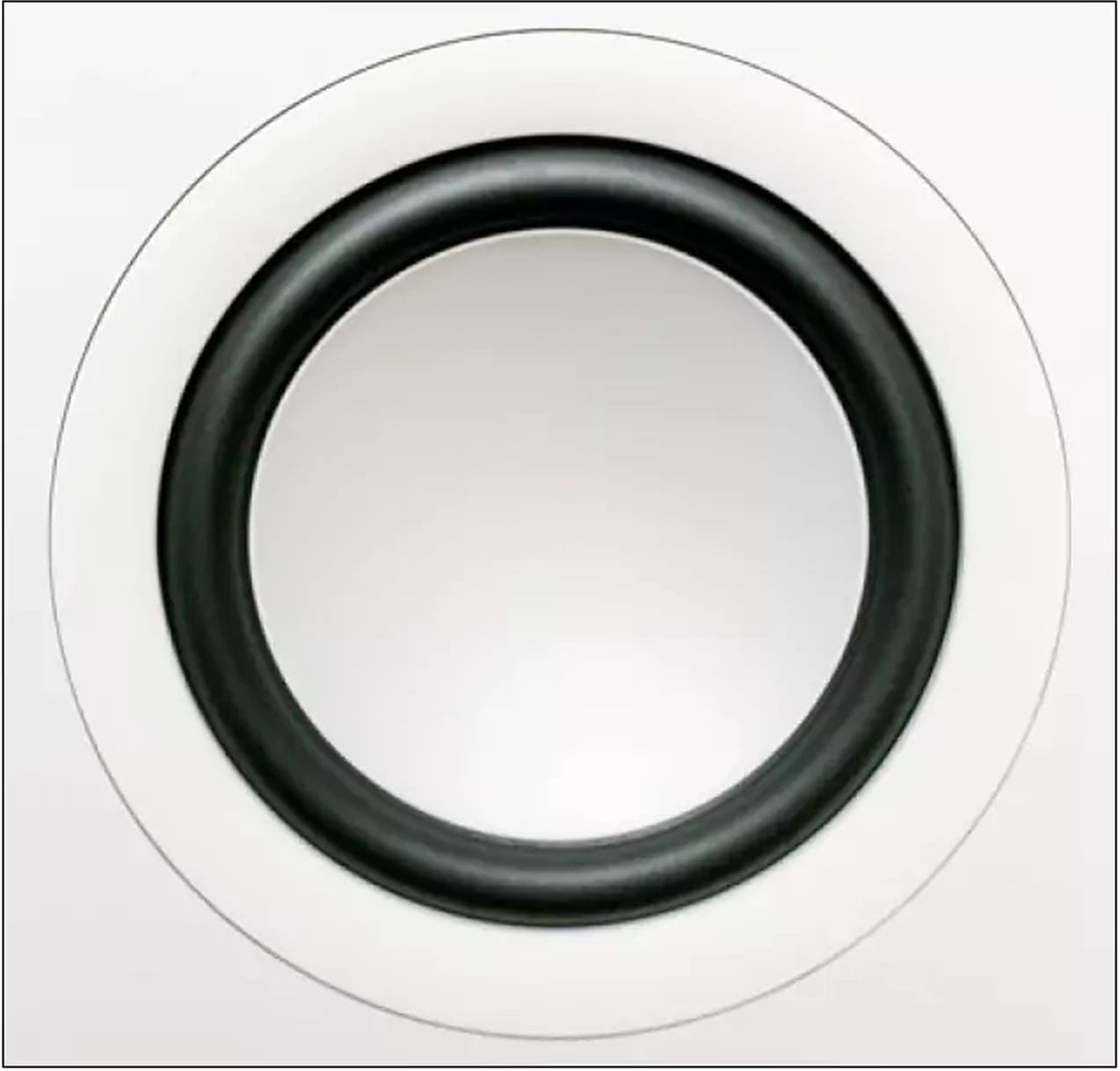
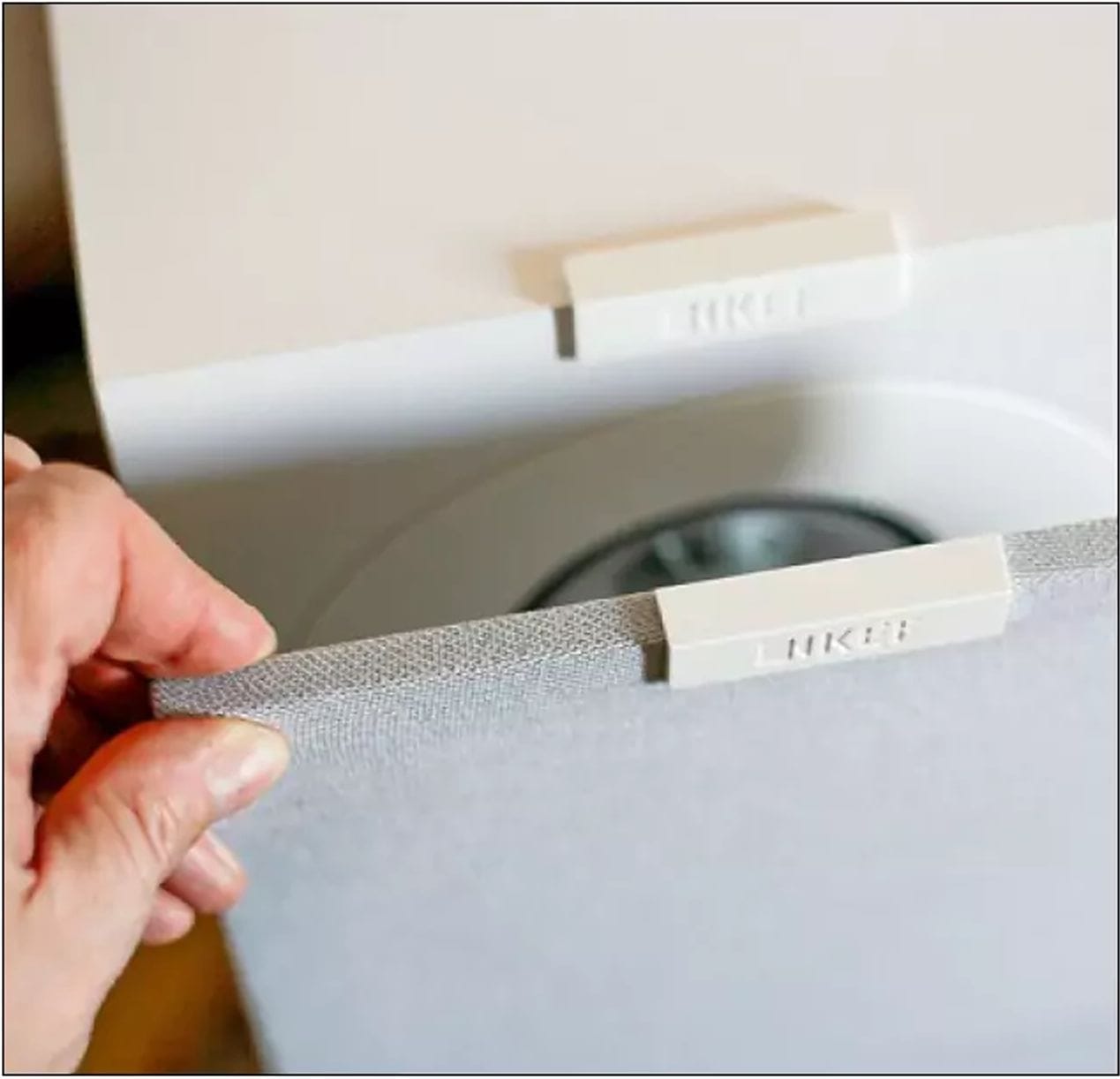
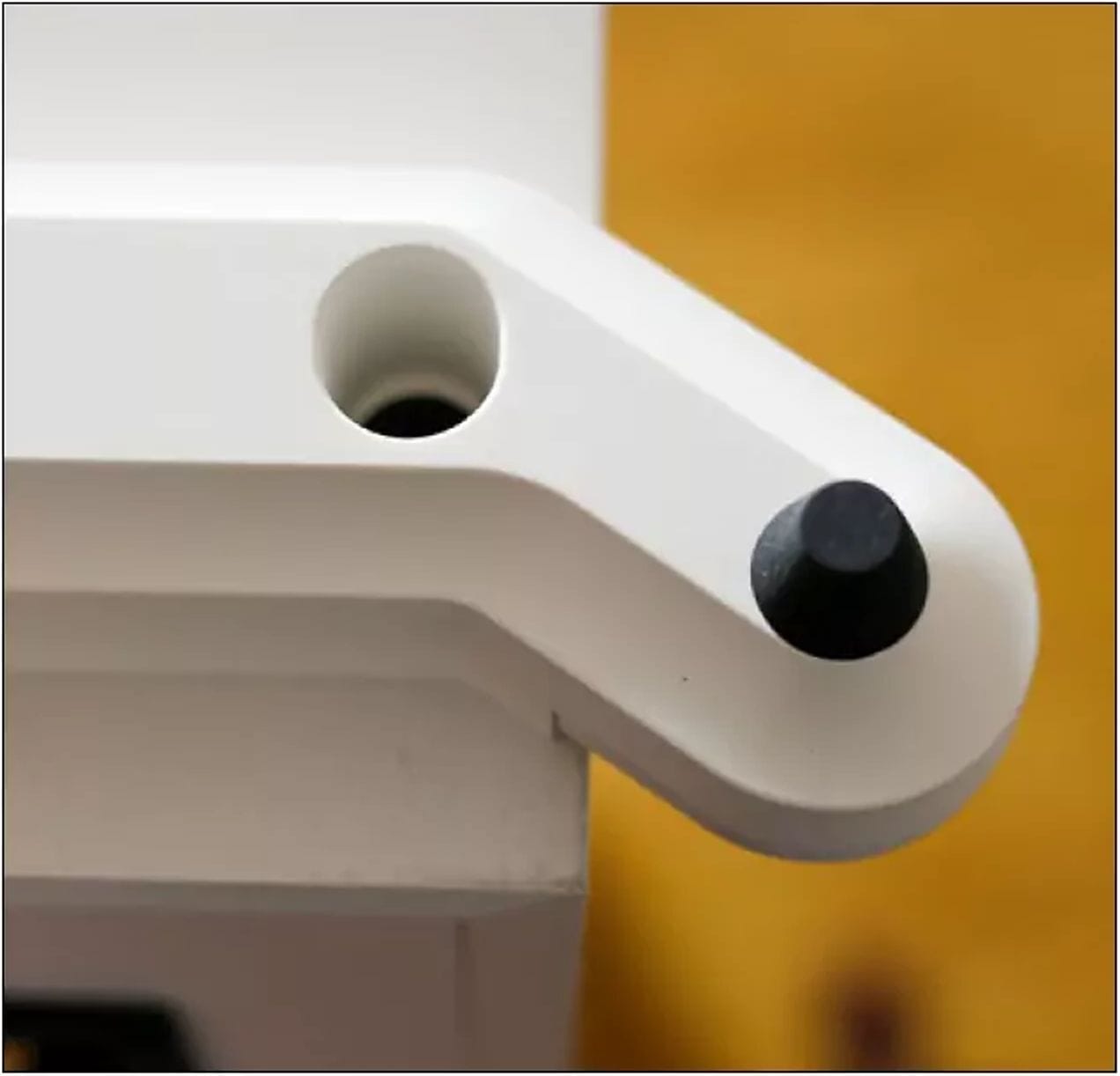
Constructive Features
On the other hand, it must be avoided as much as possible that the vibrating midrange membrane forms a constantly changing horn for the tweeter, which can lead to undesired comb filter effects. You can easily demonstrate this to yourself by singing and at the same time opening and closing your palms around your mouth, creating a wah-wah effect.
To minimize this horn effect, the Uni-Q and its membrane are built as flat as possible and with little excursion. Therefore, the Uni-Q must not be coupled too deeply, because deep basses are particularly intensive in excursion, which is simply not possible without greater membrane displacement. Not exactly a trivial task. This is the main reason why the Q7 Meta is equipped with two 165 mm bass drivers in addition to the 100 mm Uni-Q heart with a 19 mm dome. These have rigid, also flat aluminum membranes, which share the excursion work in the lower registers of the scores and relieve their high-tech colleague there. This applies similarly to all larger KEF models. Additionally, the drivers are resonance-optimized through damping wedges in the metal frames, so that parasitic and sound-impairing vibrations do not even occur.
What is “Meta”?
The Meta technology in the latest KEF generation is now intended to lead to the maximum diffusion and elimination of harmful resonances and distortions by additionally capturing the rearward sound from the Uni-Q tweeter dome, thus qualitatively enhancing the sound experience once again. It is radiated onto a highly complex labyrinth in the form of a round flat disc called “MAT” (Metamaterial Absorption Technology), where it literally “runs dead.” The difference of one and the same box with and without Meta is actually greater than one might think. 7Review has tried this several times, even with KEF Reference models and the visually stunning KEF Blade.
The KEF in the Test Lab
Let’s take a look at the measurements: In the amplitude-frequency response of the 18.4-kilogram KEF Q7 Meta, we have what is commonly referred to as “typically British” and also to be expected from a coaxial driver.
The measured amplitude-frequency response drops slowly and continuously over the entire bandwidth, resulting in a good-natured warm sound image that is never annoying and was planned exactly so on purpose.
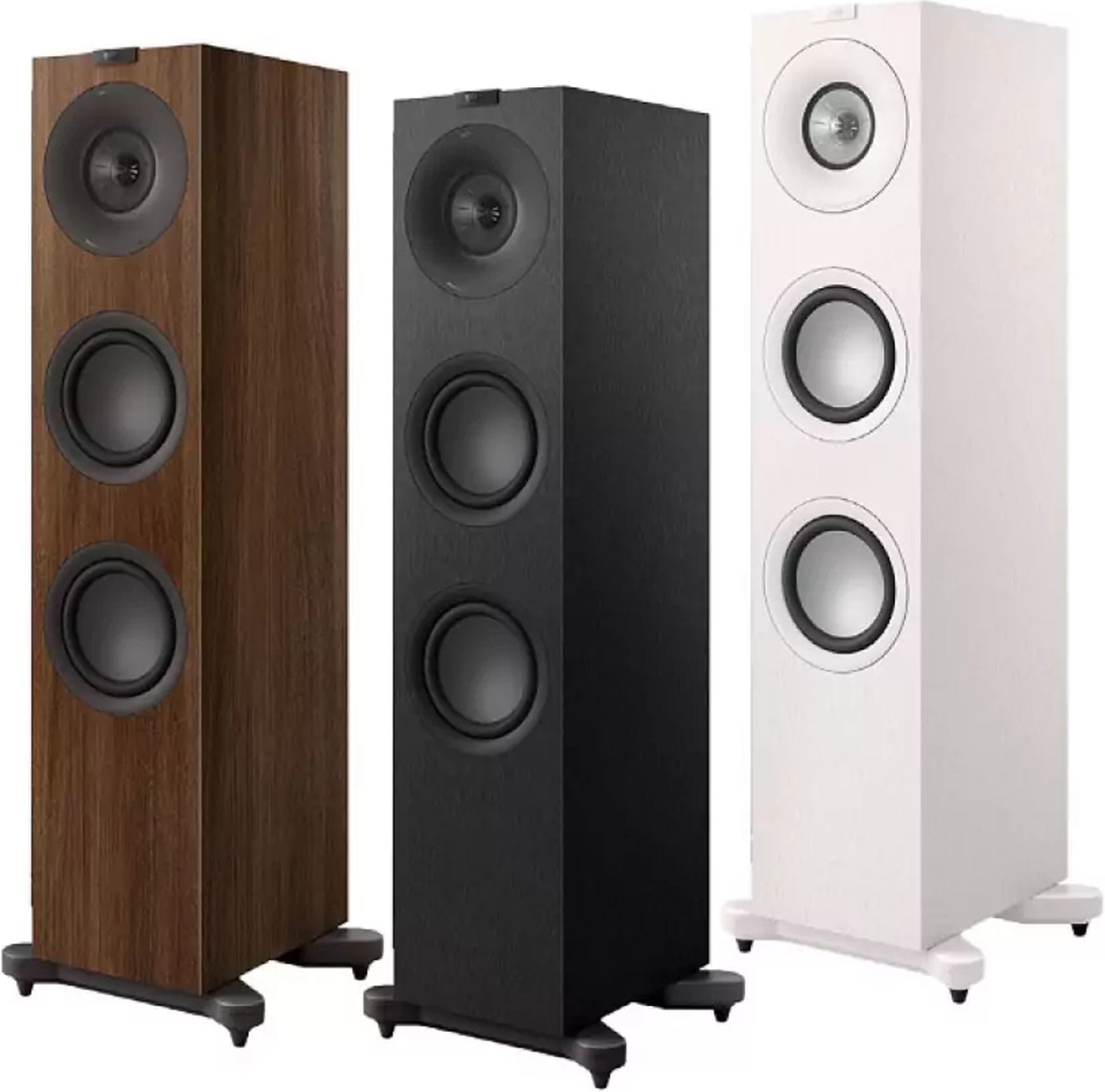
Axially and off-axis, the bass is practically the same as a “spherical wave sound source,” while the significantly more directional mid-high frequency range runs remarkably parallel on-axis and at 30 degrees, so in a seating position further right or left from the “sweet spot,” it is almost the same, just a little quieter. Speaking of quiet, the efficiency of the KEF, i.e., the “feed utilization per watt,” is a little below average. It responds to the standard 2.83 volts at the input with 83 decibels of sound pressure level, which isn’t much but sufficient.
The step response we measured as standard, with little ringing, shows the interaction of the drivers and attests the Q7 Meta precise timing, which promotes particularly good spatiality and depth gradation. The impedance curve does dip below the 3.2-ohm standard limit at about 140 hertz with 3.14 ohms, but only just barely and thus completely uncritical.
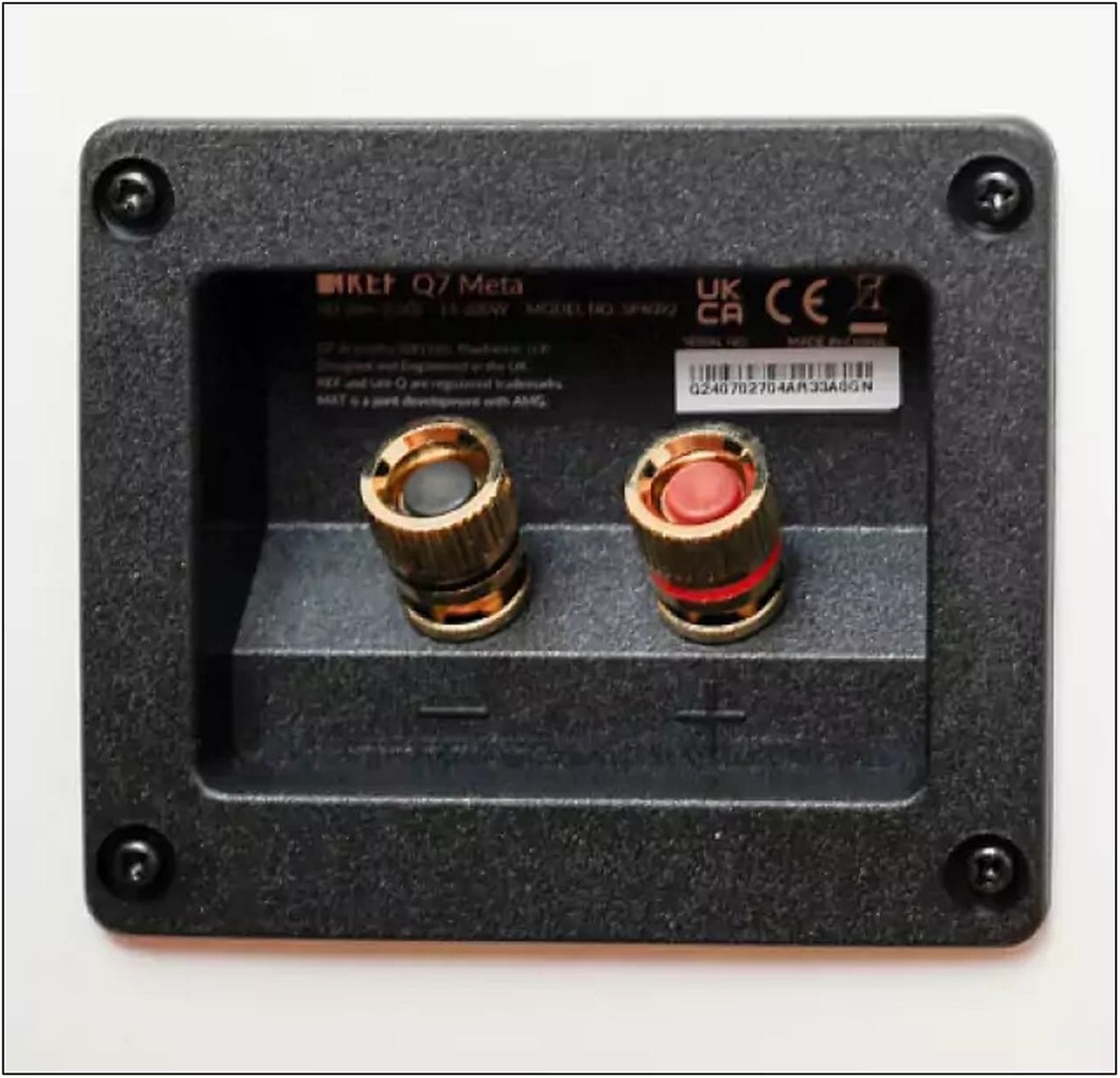
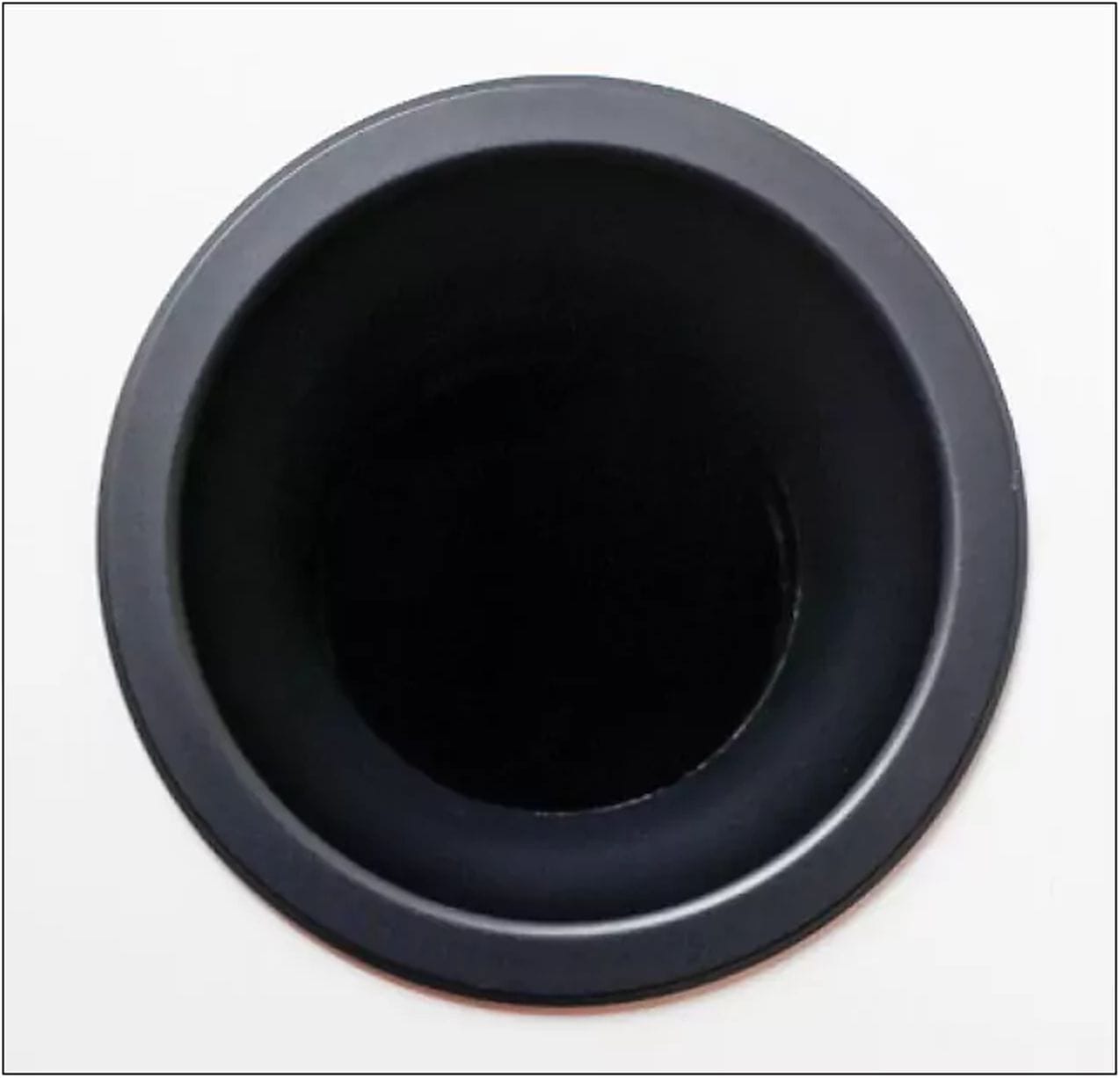
Ambient Friendliness
We find the construction with the tip-resistant traverses and the magnetically adhering gray grilles on the white-foiled test model visually very successful; however, the author would probably choose the also available version in walnut wood imitation (see photo). The cabinets are sensibly braced and designed to be very stable, the division-of-labor crossover is equipped with high-quality components and optimized again to perfect the interaction of the used drivers.
Particular attention is paid in Kent to the connection of the two woofers to the coaxial unit, as it is of virtually essential importance. Preferring several small cone drivers for the bass instead of a larger one benefits both the slim, appealing silhouette of the speaker and the fast, precise response, and again facilitates the tuning with the Uni-Q. By the way, the crossover frequencies in the Q7 are at 440 hertz and 2.3 kilohertz.
In terms of sound, you simply won’t get “tired” or even “weary” of this speaker; rather, they are suitable due to their hardly showy and pleasant way of making music for extended excursions into your favorite music or also for exploratory journeys into new realms, equally symphonic or jazzy to rocky inspired. In direct comparison to strikingly lively tuned, indeed almost sprightly transducers, such as the quite excellent Triangle Borea, you might miss a little sparkle in the highs, but that is typical for the Uni-Q, and you quickly get used to it.
The coaxial driver manages to equalize this with almost perfect and inspiring timing and naturalness, along with a 3D effect. Here, different characters meet, both of which have their justification and will find corresponding fans.
Enormous Cohesiveness
The extraordinary cohesiveness is particularly noticeable with male and female singers, as the seamless transmission of the human vocal range is a difficult task for any transducer and is superbly mastered by KEF. This applies equally to Klaus Meine, the frontman of the Scorpions, in “Send Me An Angel” as well as to the angelic Cara Dillon in “Black Is The Colour.” Vocals are a clear strength of the KEF, which also scores in terms of musical flow.
The KEF appears more pleasantly unobtrusive than restrained, leaves nothing to be desired. It does not overwhelm small rooms with too much bass either, which is controlled and appears a tad lean rather than bloated. “Thunderstruck” by AC/DC, simultaneously the fitting film music to “Battleship,” really rocks convincingly.
The Q7 Meta are very level-stable and can certainly be described as temperamental. They are, so to speak, “good on the gas” and also play excellently at low volumes. You will rarely need the supplied plugs for the bass reflex openings. Instead, they appear immensely genuine across the entire spectrum, almost self-evident, and you can simply listen to them for hours. In doing so, you always discover new, previously “unheard” facets even in frequently played favorite music. Very pleasing.
Of course, the new Q Meta series is also suitable for home cinema use, as KEF gladly offers matching center, compact, and rear speakers as well as subwoofers, and the prices are typically Q and by no means prohibitive. You can also start with the Q7 Meta as front speakers and gradually expand the set into a cinema corner in the living room. The Uni-Q driver, we gladly admit, is—in whatever constellation—a welcome guest in our two listening rooms. You always know that the expected result will be a proven good one, largely independent of the price range.
So it is here in the fiercely contested, because extraordinarily popular “one-meter class” of more compact floor-standing speakers, which are suitable for small to medium-sized spaces, i.e., common living rooms up to the party cellar.
For less than $2,100, you get a truly fantastic pair of speakers here. And this choice must be made carefully. Because ultimately, everyone knows how important that can be. A speaker often remains statistically not infrequently longer than the “life partner,” even if no one wishes for that.
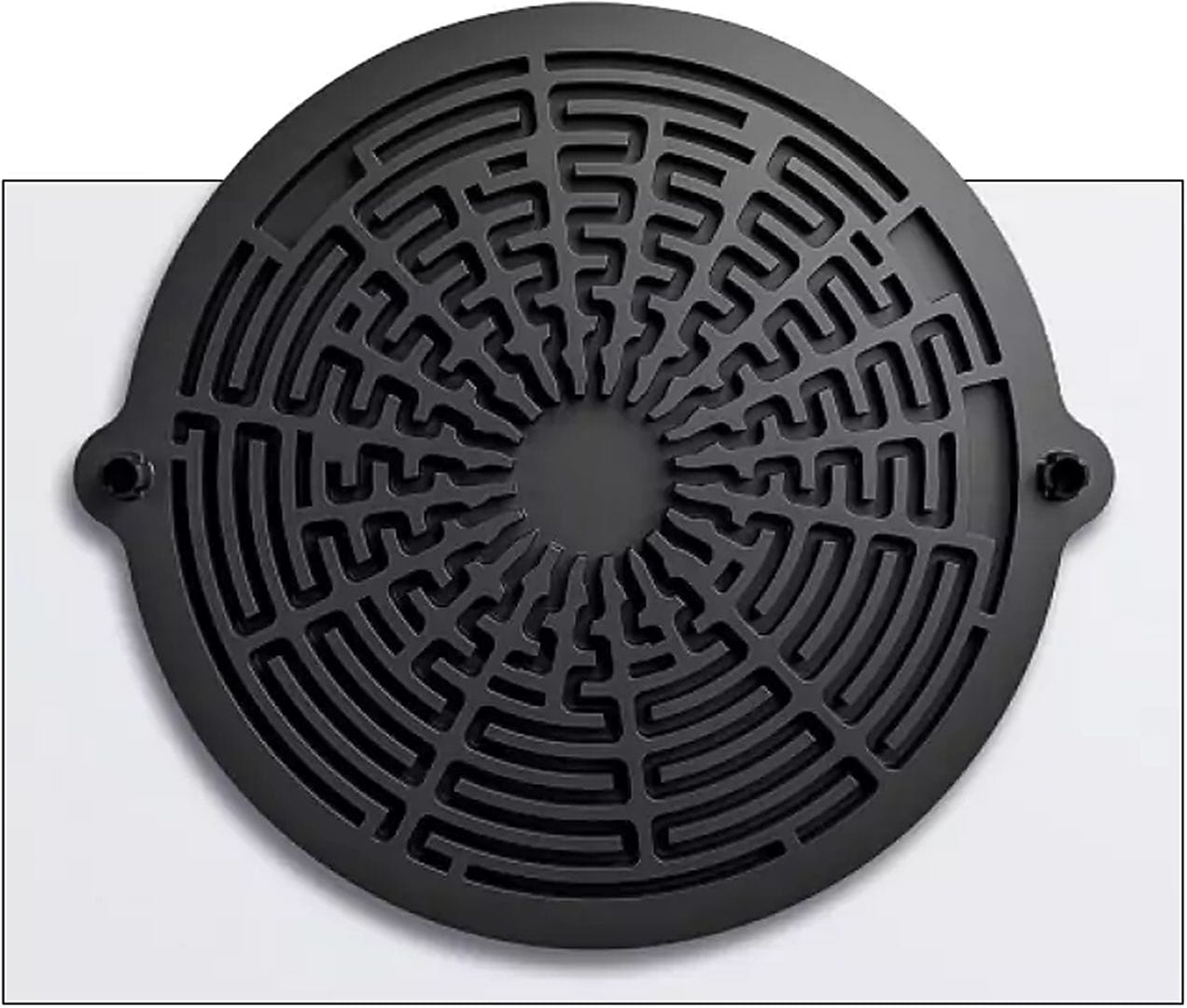
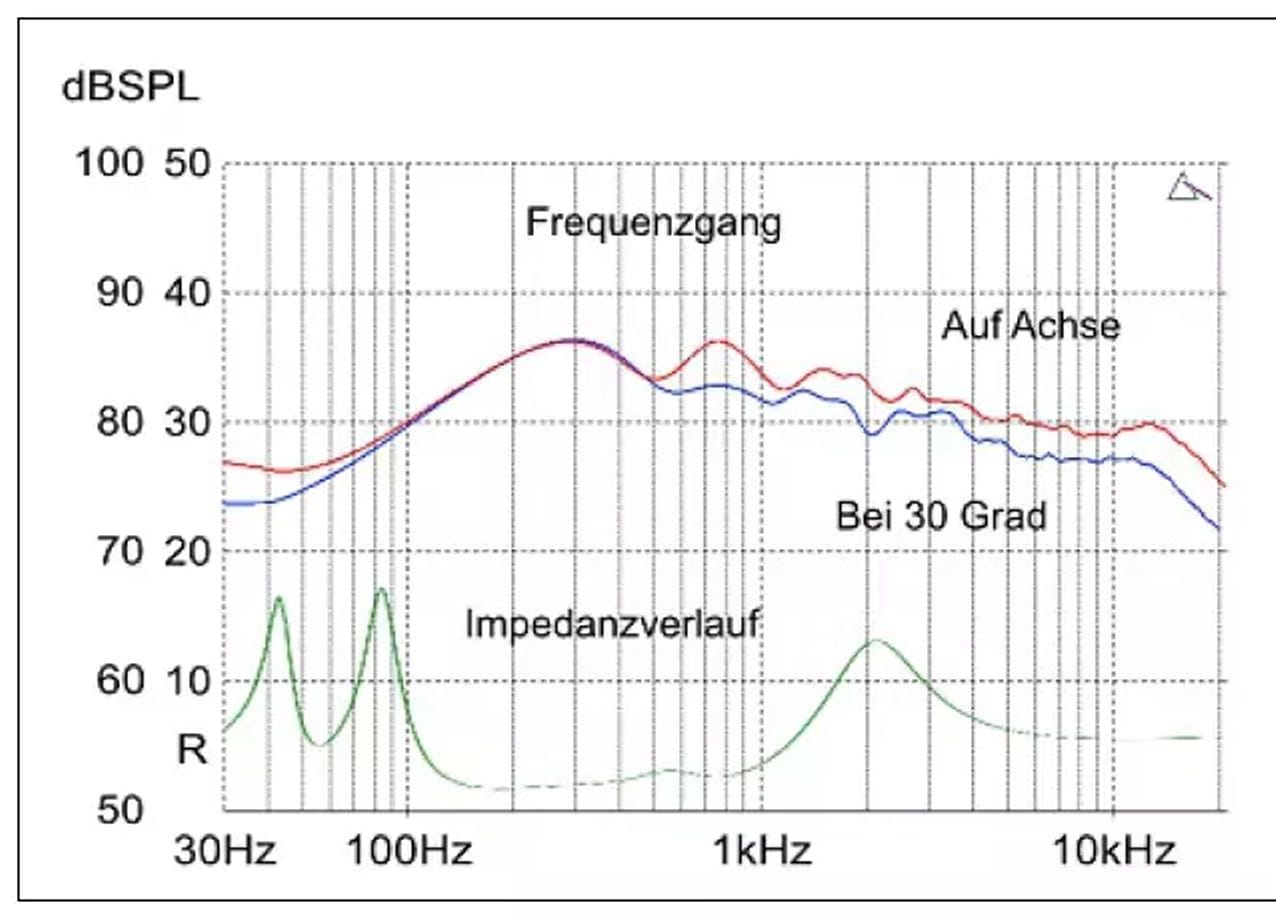
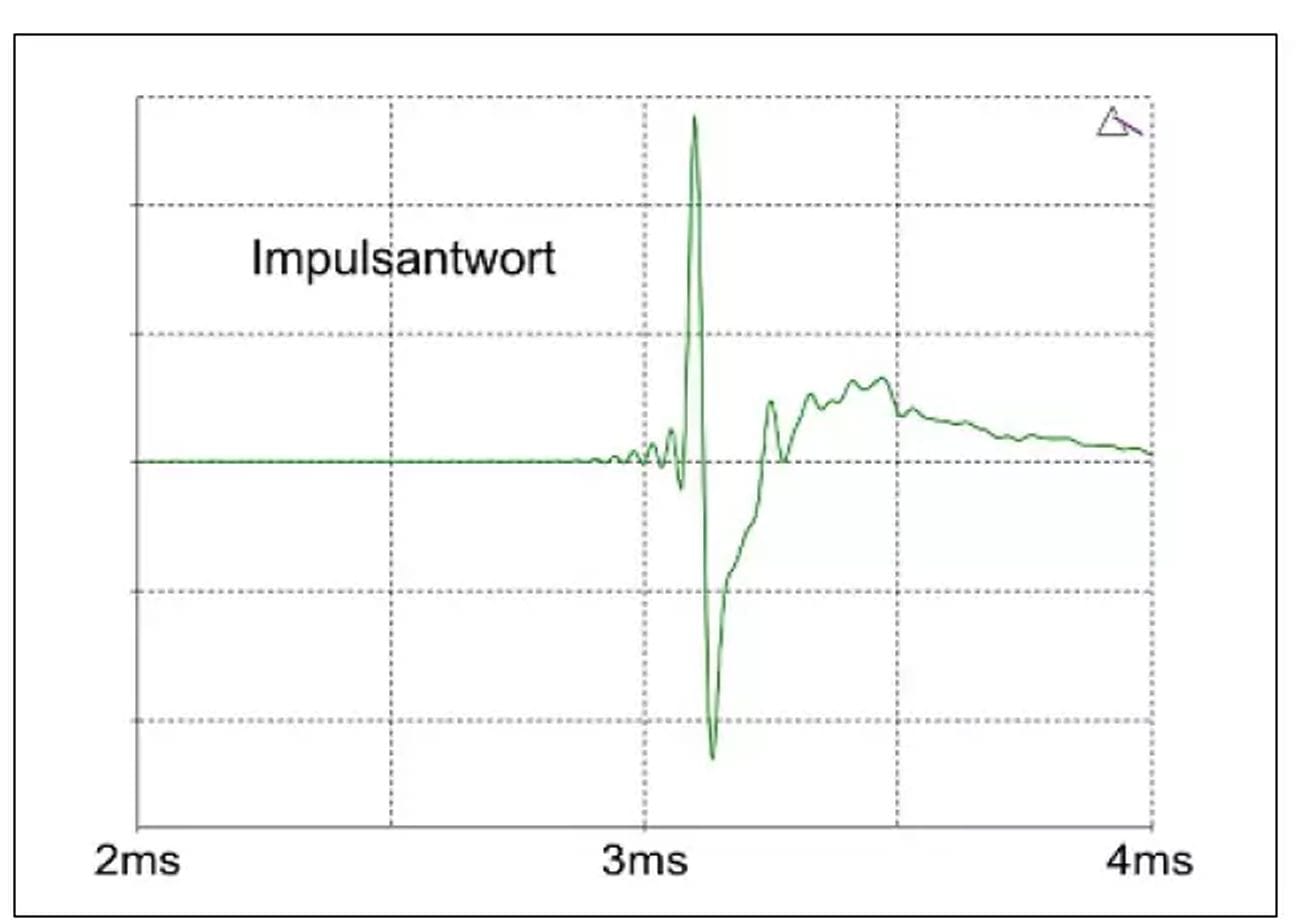
THAT’S WHAT WE LISTENED WITH

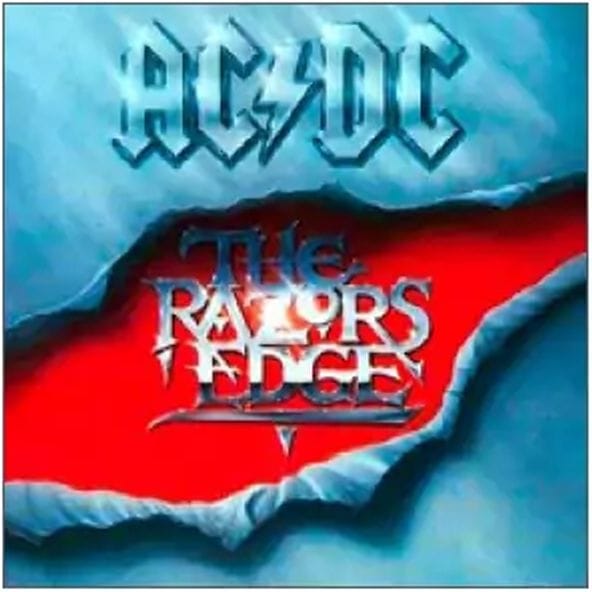
SCORPIONS: MTV UNPLUGGED A memorable open-air performance with guests in Athens. Also great on Blu-ray!
AC/DC: THE RAZORS EDGE Not the best album by the Australians, but “Thunderstruck” is a must…
Specs
- Product/Price Class: Floor-standing speaker / 1,500 to 2,500 Euros
- Website: kef.com
- Dimensions (W x H x D): 31.7 x 100.1 x 31.5 cm
- Weight: 18.4 kg
- Design Principle: Dynamic, 3-way with coaxial driver, bass reflex
- Terminal: Single-Wire
- Recommended Setup: Best placed freely with some distance from the wall
Verdict
| Category | Details | Score/Notes |
|---|---|---|
| Sound (60% weight) | Very good | 8.6/10 |
| Sound Quality | Very spacious, clear, precise, pleasant | |
| Measurements (15% weight) | Satisfactory | 7.4/10 |
| Frequency Response | Satisfactory | |
| Sound Pressure Level | Adequate | 83 dB |
| Impulse Response | Very good | |
| Minimum Impedance | Satisfactory | 3.14 Ohms at 140 Hz |
| Distortion (63 Hz / 3 kHz / 10 kHz) | Good | 0.86% / 0.3% / 0.4% |
| Compatibility | Good | |
| Features & Handling (25% weight) | 7.5/10 | |
| Setup | Very good | |
| Manual Quality | Satisfactory | |
| Initial Setup | Very good | |
| Sound Correction Possible | No | |
| Cabinet Finishes | Very good | 3 options |
| Included Accessories | Satisfactory | |
| Feel & Build Quality | Good | |
| Upgradeable | No | |
| Warranty | Good | 5 years |
Test Result: Good 8.1/10
When you purchase through links on our site, I may earn an affiliate commission. Here’s how it works.
THE NEW KEF Q7 META IS HERE! | KEF Q7 Meta Speaker Overview
Thank you all for the incredible recent support on the channel. This week, we are taking a look at another new speaker in KEF's ...







